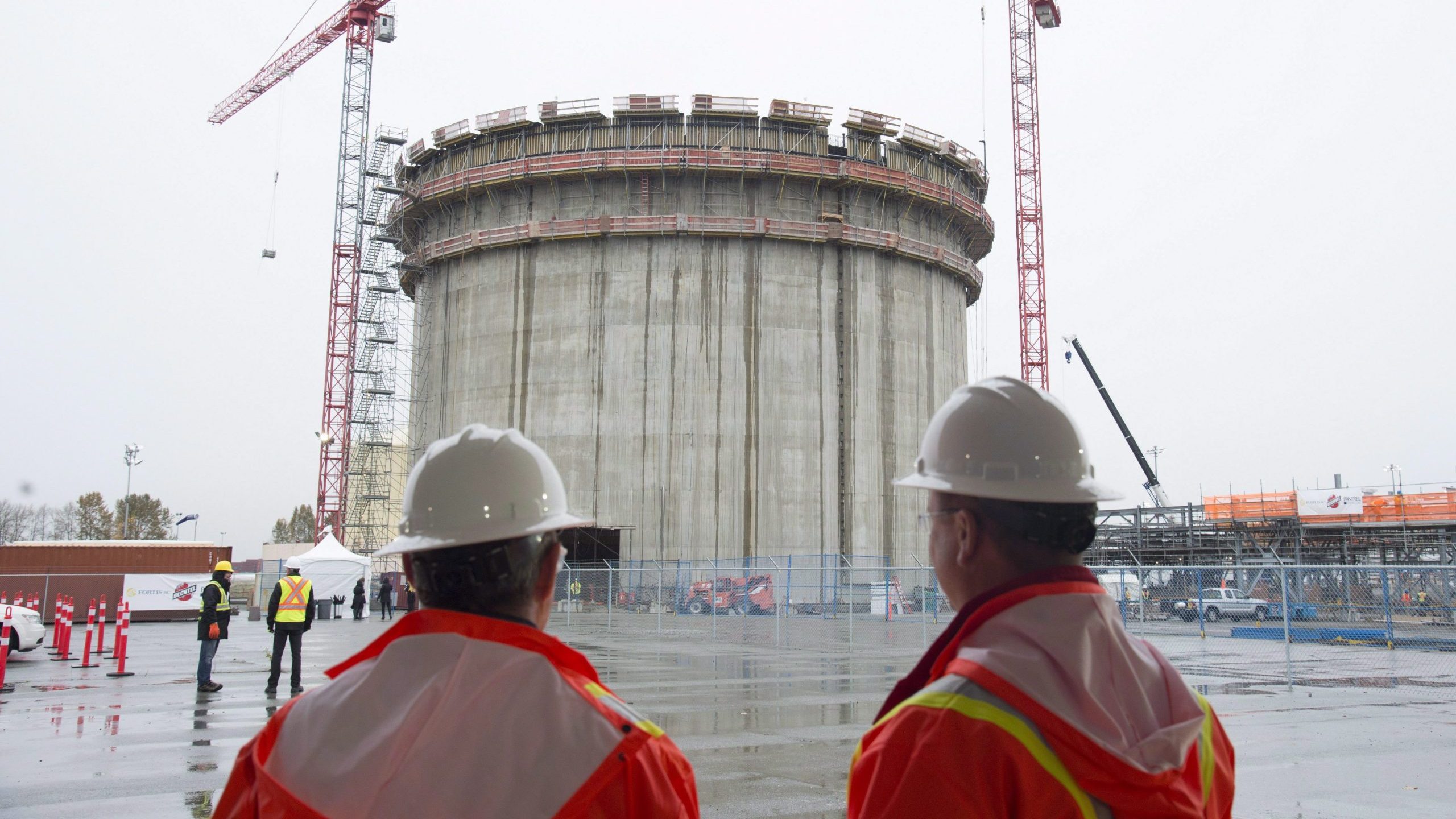
With energy security top of mind, liquefied natural gas (LNG) projects in Canada, and B.C. in particular, are making progress.
A lesser-known project, Tilbury LNG, has been operating near Vancouver since 1971. Originally used to store LNG to ensure uninterrupted energy supply for local customers during peak demand, it now also produces LNG to fuel BC Ferries and Seaspan Ferries while producing lower emissions.
Tilbury is B.C.’s first LNG project to export to China, a milestone reached in 2017 using container shipping. using container shipping.
Tilbury is developing two expansion projects, after adding 46,000 cubic metres of extra storage capacity for LNG and liquefication capacity of 250,000 tonnes of LNG per year in 2019.
Owner FortisBC is in the planning process for an expansion adding up to tonnes of liquefication capacity and upgrading a natural gas supply line. Construction is expected to start this year and be completed by 2026.
Tilbury’s Phase 2 project will expand its storage capacity to around 142,400 cubic metres of LNG and up to 2.6 million tonnes of annual LNG production capacity. This portion of the project is currently weaving its way through an environmental assessment with the federal government’s Impact Assessment Agency and B.C.’s Environmental Assessment Office. FortisBC is also conducting ongoing engagement with local and Indigenous communities.
In February, the company and the Snuneymuxw First Nation inked an agreement that will provide “educational opportunities, relevant training and continued investment in the community.”
“Coming together to establish an agreement like this takes time and a lot of thoughtful discussion, but I know it is worthwhile,” FortisBC CEO Roger Dall’Antonia said in a statement.
“Contributions from Snuneymuxw will ensure FortisBC can plan and build Tilbury projects that will help minimize environmental impacts and create benefits that will help support the Snuneymuxw community.”
In August of last year, FortisBC and the Musqueam Indian Band signed a benefits sharing agreement for the expansion projects as well as the Tilbury Marine Jetty, which would enable ship-to-ship LNG fuelling. The agreement includes options for the Musqueam to acquire equity ownership in the projects.
Musqueam Chief Wayne Sparrow noted in a statement that “For thousands of years, Musqueam has lived along a trading route and supported trade in the region. Through our relationship with FortisBC, we are building on this strength while being leaders in energy stability and ensuring benefits for future generations.”
Being powered by hydroelectricity makes Tilbury one of the cleanest sources of LNG production in the world. According to FortisBC, LNG production emissions from Tilbury are about 30 per cent lower than the global average.
A lifecycle analysis using tools like the Pembina Institute’s B.C. Shale Scenario shows the expansion could reduce global emissions by up to 800,000 tonnes per year. This is nearly 4.3 times the emissions operations are expected to produce, according to the detailed project description submitted to the relevant environmental assessment agencies.
The use of LNG as marine shipping fuel also has an added benefit of being much cleaner than other sources like heavy fuel oil. According to an analysis by environmental consultancy Sphera, when LNG IS used for shipping it reduces air pollutants like nitrogen oxides and particulate matter by over 90 per cent, and sulphur oxide levels drop to nearly zero.
According to FortisBC, LNG from Tilbury will reduce greenhouse gases by up to 27% compared to other marine fuels. Currently there are 837 LNG capable vessels operating across the globe, with 781 new ships on order. With this capacity increase, Tilbury could become a key stop off point for LNG powered vessels.
The unaltered reproduction of this content is free of charge with attribution to Canadian Energy Centre Ltd.